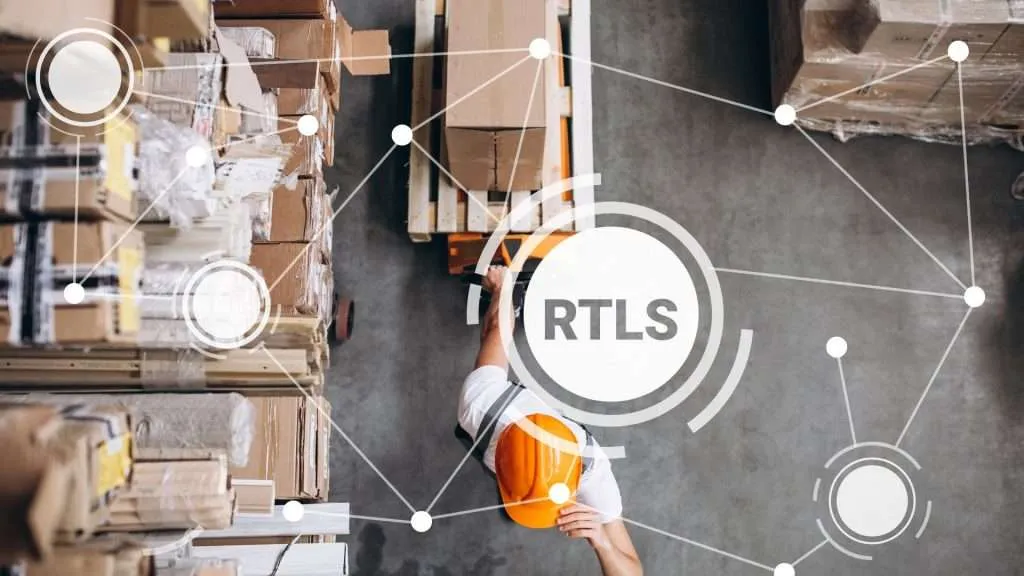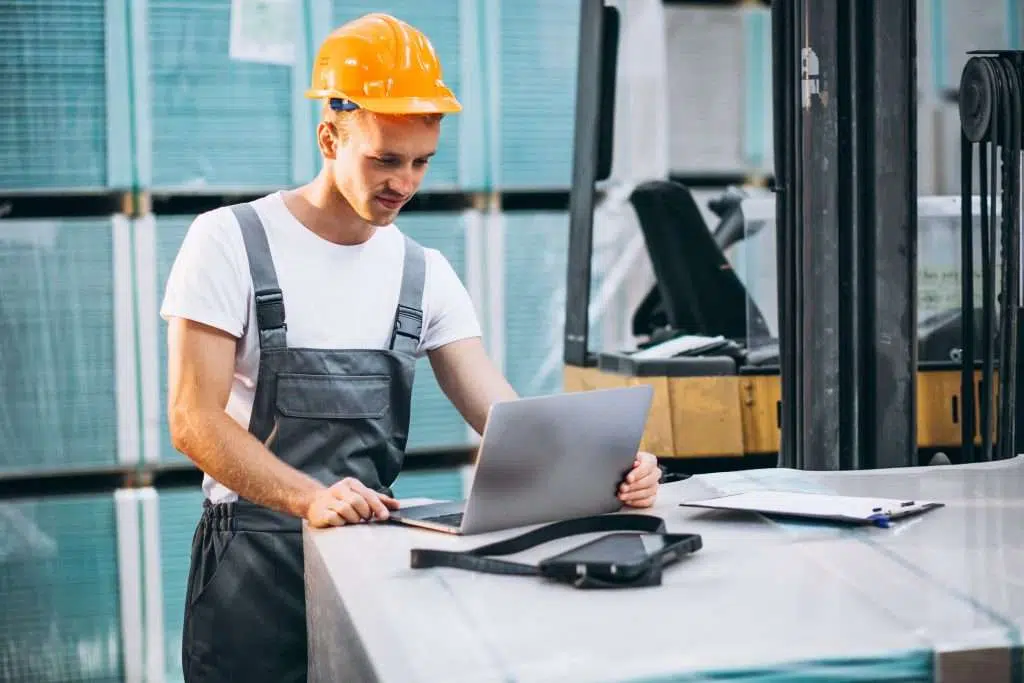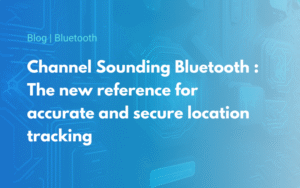
For many years, the geolocation market was dominated by GPS. However, since radio signals emitted by satellites were not designed to pass through obstacles, this technology quickly showed its limits in terms of indoor location. However, being able to locate equipment and people precisely indoors has become a challenge for many sectors of activity. Indeed, this need for finesse and precision concerns industrial companies as well as those in the health sector or even those involved in the world of sports. To meet these needs, new technologies based on different communication protocols have been developed.
We presented some of these protocols in a previous article (read here), and in particular the calculation of position by angle of arrival detection, also known as “AOA”. This communication protocol allowing to locate in real time, a person or an object within 10cm, this makes it one of the most accurate and most reactive on the market.
The principle is simple: in order to provide real-time position feedback, the system relies on a network of 360° antennas and mobile beacons. The AOA protocol, will allow to detect in a 3D reference frame, the angle formed between the antenna and the beacon, and to track the position of the latter in less than 100ms.
This indoor geolocation technology, thanks to its accuracy and ultra-reactivity, can be used for many business applications. In this article, we propose you to study some application cases around health, industry 4.0, security and sport.
Tracking of medical equipment, safety and patient/visitor journeys
The field of healthcare and the technological developments associated with it represent one of the pillars of our society. Investments made for the evolution of new technologies in this field are expected to reach several billion dollars worldwide by 2020, and the IoT alone is expected to represent nearly 10 billion dollars. Globally, connected devices today represent a real assistance to human activity and allow considerable time savings. In the medical sector, this can sometimes be decisive, especially when patients’ health is at stake.
To meet this need, hospitals and healthcare centers are beginning to invest in RTLS solutions, with the goal of ensuring patient safety, optimizing caregiver time, and reducing maintenance and device purchase costs.

Indeed, by equipping the building with 360° antennas and the medical equipment with wireless beacons, the nursing staff will be able to locate their position in real time directly via smartphone. This allows them to be more responsive and reduce the time wasted searching for equipment by showing them the location of the nearest one.
This will optimize the staff’s journey, thus avoiding long and tiring trips.
While indoor location can help reduce staff downtime due to recurring physical effort, it can also help hospitals reduce their equipment management costs. The use of high-precision indoor location solutions can save hospitals millions of euros each year by making it easier to inventory their machinery, thereby limiting the additional costs associated with equipment purchases.
In addition, this type of technology will also improve the flow of patients, visitors and healthcare staff within hospitals. Indeed, hospitals are places where the flow of people entering and leaving is very high. Identifying and locating patients, healthcare staff and visitors in real time will ensure their safety. These RTLS systems will allow, among other things, to limit access to certain areas, but also to ensure patient safety from a hygiene point of view. By controlling, through identification, the amount of time practitioners spend washing their hands between each consultation, this will limit the transmission of germs. In the United States, nosocomial infections are the cause of more than 80,000 deaths each year (Source: WHO World Health Organization https://www.who.int).
In addition, indoor location can be very useful to improve the user experience, helping people find their way around the various departments and allowing them to arrive directly at the desired location without getting lost in the corridors and floors.
Today, high-precision indoor location has become a real asset for healthcare centers, whether to ensure the safety of people, facilitate their movement inside buildings, optimize staff time or reduce expenses.
The RTLS to secure and optimize the industry 4.0
Manufacturers are among the major players in the world’s economic fabric, producing and delivering all kinds of products on a large scale. This sector of activity has undergone several revolutions allowing it to evolve and produce ever more and faster. For the past ten years or so, we have been hearing about Industry 4.0, a development phase that introduces the idea of the intelligent factory. Optimizing, automating and facilitating the tasks performed by workers is one of the main challenges of this new industrial era. In a context of digitization of the production chain, being able to quickly locate equipment or people will make it possible to provide an answer to business problems by improving the operational efficiency of factories while reinforcing their safety.
In industrial companies, employees work on machines that can sometimes be dangerous and cause work accidents. Ensuring the safety of teams is a key concern and this can be considerably improved by implementing real-time location solutions. Indeed, this type of system, which ensures high precision and ultra-reactivity, can prevent collisions between workers and engines, inform employees when they enter a hazardous area, thanks to audible and visual alerts, or detect the omission of safety equipment.

In the near future, RTLS solutions will also make it possible to detect loss of verticality and thus raise alerts in real time in the event of a fall of a person.
From an industrial equipment tracking point of view, the localization by angle of arrival detection being ultra precise, it will allow instantaneous localization of small parts such as hand tools. This will, among other things, facilitate the automation of the inventory of the equipment park, thus avoiding the forgetfulness / loss of material. Certain fields such as aeronautics require increased vigilance on the part of operators, because forgetting a tool in an aircraft engine could have disastrous consequences. Errors that can be avoided thanks to this type of solution, raising alerts when a tool is missing in a servant. In addition, following the example of hospital environments, asset tracking in an industrial environment will optimize employee time by facilitating the search for tools. But it will also reduce the costs associated with buying back equipment that is simply misplaced, or optimize its maintenance by analyzing its rate of use.

One thing is certain, industrial companies are among the most innovative and the development of RTLS solutions in this sector is just one example.
Real-time data to analyze and improve athlete performance
Connected watches, wireless headphones, mobile applications, connected clothing, in recent years the digitalization of the world of sports is accelerating. Being able to collect and analyze data is an important issue for sports clubs and federations, enabling them to improve the performance of athletes. In the 1970s, access to slow motion HD video was revolutionary. Today, RTLS technologies allow to go even further in data access and analysis. For team sports, the results are even more convincing. Indeed, if we equip the players of an ice hockey team with a small Bluetooth beacon, we can analyze in real time countless data: speed, distance traveled, heart rate, etc.. The puck can also be equipped with a beacon to measure its speed, number of passes, flight time and many other data. Thanks to these data, it is possible to know which were the decisive actions of a match or which players are the best performers.
RTLS solutions can address the performance challenges of all athletes, whether they are competing as a team or as an individual, but it can go further by also providing additional data to fans, thus increasing their engagement. This can quickly become lucrative when it comes to sports betting. Knowing in real time the performance of athletes will allow bettors to make much more accurate predictions about the outcome of competitions and matches, completely changing the boundaries of the sport.
Indoor location, a challenge for many sectors of activity
In this article, we’ve talked about the healthcare, industry 4.0 and sports sectors, but high-precision real-time indoor location is an issue for many other sectors such as retail, tourism or smart building. Today, thanks to technologies such as Angle of Arrival Detection (AOA) calculation, it is possible to deploy indoor geolocation solutions on a large scale and at very competitive costs.
This RTLS solution is one among dozens of others, so it is not always easy to find your way around. To help you in your choice of technology, you will find below a table comparing some of the solutions available to you.

To learn more about this technology, we invite you to visit the website of our partner Quuppa, expert in indoor location by angle of arrival detection or the Bluetooth GIS website.
Would you like to know more about beacons dedicated to high-precision indoor localization?


